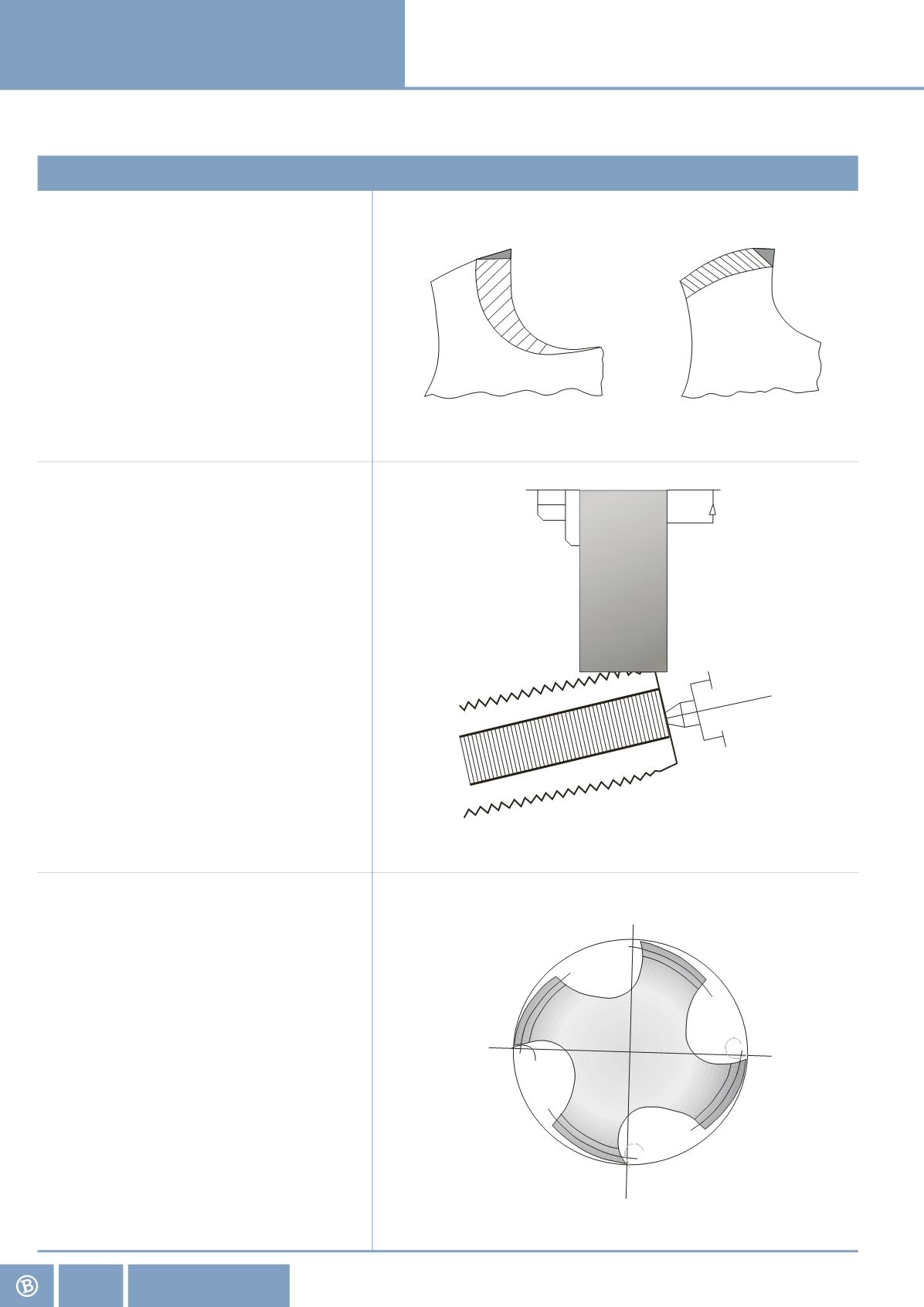

120
www.boccassini.comAFFILATURA /
SHARPENING
AFFILATURA /
SHARPENING
È importante affilare in tempo il maschio quando presenta sintomi di
usura. Ciò si riconosce da una
cattiva qualità
della filettatura. Non
intervenendo preventivamente si ottiene un aumento del consumo del
tagliente del maschio. L’affilatura del maschio serve a rigenerare gli spigoli
consumati dall’ usura, ciò è molto importante per la durata del maschio e
per la qualità delle superfici filettate. L’utensile non affilato aumenta il
momento torcente dell’utensile, e può portare alla rottura del maschio.
It is important to sharpen on time the tap when it has symptoms of wear. This is
visible by a poor quality of the thread. Not acting in advance you get an increase
in the consumption of the sharp of the tap. The sharpening of the tap serves to
regenerate the edges consumed by wear, this is very important for the life of the
tap and for the quality of the threaded surfaces. The unsharpened tool increases
the torque of the tool, and can lead to the breakdown of the tap.
SI DEVE PROCEDERE COME SEGUE
/ PROCEED AS FOLLOW
1) affilatura imbocco: la produzione di trucioli è più alta all’imbocco, e per
tale ragione che l’usura dell’imbocco è più intensa, l’imbocco deve
essere perfettamente centrato onde evitare gli effetti visibili. Pericolo:
rottura del maschio durante la corsa di ritorno.
Sharpening chamfer: chips production is higher at the entrance, it is for this
reason that the wear of the chamfer is more intense, the chamfer must be
perfectly centered to prevent the visible effects. Danger: tap breakage during
the return stroke
2) affilatura scanalature, si deve fare su un’affilatrice per maschi dotata di
divisore o di una patrona.
* Scanalature diritte si ripassa la superficie di spoglia superiore.
* Scanalature diritte imbocco corretto si riaffila solo la scanalatura
tagliente.
* Scanalature elicoidali si affilano seguendo il passo elica.
Sharpening flutes, you should do on a sharpener for taps with a divider.
* Straight flutes goes over the upper rake surface.
* Straight flutes spiral point is regrinds only the flute’s edge.
* Helical flutes are sharpened following the step helix.
CONTROLLI /
CHECKS
Dopo l’affilatura del maschio si deve controllare:
Imbocco: vedere se centrato
il numero di spire e l’ angolo devono essere uguali
i taglienti devono essere concentrici.
Dato che la zona dell’imbocco è soggetta ad usura, è necessario ripristinarla
correttamente. Se l’usura si presenta anche sui fianchi del filetto, si
consiglia di accorciare il maschio prima di procedere alla riaffilatura. Dopo
l’ affilatura è bene eseguire una pulizia delle bave createsi, che si possono
togliere con una spazzola metallica. Pericolo: alesature, filettature lasche.
After the sharpening of the tap, it must be checked:
Chamfer: check if it is centered
the number of turns and the angle must be the same
the cutting edges should be concentric.
Since that the chamfer area is subject to wear, it is necessary to restore it properly.
If the wear is also present on the flanks of the thread, it is recommended to
shorten the tap prior to regrinding. After the sharpness it is good to clean the burr,
which can be removed with a wire brush.
Danger: boring, loose threads.
INFO



















